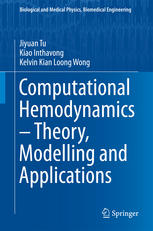

Most ebook files are in PDF format, so you can easily read them using various software such as Foxit Reader or directly on the Google Chrome browser.
Some ebook files are released by publishers in other formats such as .awz, .mobi, .epub, .fb2, etc. You may need to install specific software to read these formats on mobile/PC, such as Calibre.
Please read the tutorial at this link: https://ebookbell.com/faq
We offer FREE conversion to the popular formats you request; however, this may take some time. Therefore, right after payment, please email us, and we will try to provide the service as quickly as possible.
For some exceptional file formats or broken links (if any), please refrain from opening any disputes. Instead, email us first, and we will try to assist within a maximum of 6 hours.
EbookBell Team

4.8
54 reviewsThis book discusses geometric and mathematical models that can be used to study fluid and structural mechanics in the cardiovascular system. Where traditional research methodologies in the human cardiovascular system are challenging due to its invasive nature, several recent advances in medical imaging and computational fluid and solid mechanics modelling now provide new and exciting research opportunities. This emerging field of study is multi-disciplinary, involving numerical methods, computational science, fluid and structural mechanics, and biomedical engineering. Certainly any new student or researcher in this field may feel overwhelmed by the wide range of disciplines that need to be understood.
This unique book is one of the first to bring together knowledge from multiple disciplines, providing a starting point to each of the individual disciplines involved, attempting to ease the steep learning curve. This book presents elementary knowledge on the physiology of the cardiovascular system; basic knowledge and techniques on reconstructing geometric models from medical imaging; mathematics that describe fluid and structural mechanics, and corresponding numerical/computational methods to solve its equations and problems.
Many practical examples and case studies are presented to reinforce best practice guidelines for setting high quality computational models and simulations. These examples contain a large number of images for visualization, to explain cardiovascular physiological functions and disease. The reader is then exposed to some of the latest research activities through a summary of breakthrough research models, findings, and techniques.
The book’s approach is aimed at students and researchers entering this field from engineering, applied mathematics, biotechnology or medicine, wishing to engage in this emerging and exciting field of computational hemodynamics modelling.